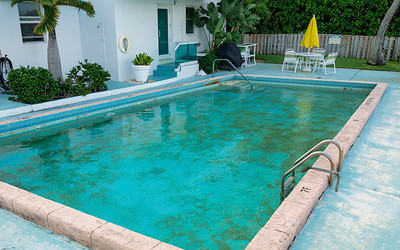Why is My Pool Green? The Best Way to Get Rid of Algae in Your Pool
10th Mar 2023
Algae in swimming pools can be caused by a number of factors, including insufficient chlorine or other sanitizing agents, poor circulation and filtration, warm water temperatures, and high levels of sunlight. Algae spores also can be introduced to the pool by wind, rain, or debris.
To get rid of algae in your swimming pool, you'll need to take the following steps:
- Test your pool water: Use a pool water testing kit to measure the pH, alkalinity and chlorine levels in your pool. This will help you determine if the water chemistry is out of balance, which can contribute to algae growth.
- Brush and vacuum: Brush the sides and bottom of the pool to loosen any algae that has formed. Then, vacuum the pool to remove the algae and other debris.
- Shock the pool: "Shock" the pool with a high dose of chlorine or other sanitizer to kill any remaining algae spores. Follow the manufacturer's instructions for the proper amount of shock treatment based on the size of your pool.
- Maintain proper pool chemistry: Once the algae is gone, maintain proper pool chemistry to prevent it from returning. This includes regularly testing and adjusting the pH, alkalinity and chlorine levels, as well as ensuring proper circulation and filtration.
- Consider using an algaecide: If you have recurring algae problems, you may want to use an algaecide to prevent future growth. Be sure to follow the manufacturer's instructions carefully. Avoid overuse, as this can cause other water chemistry issues.
- Unfortunately, you won’t get rid of algae overnight. Be patient.
It's important to address algae growth in your pool as soon as possible, as it can lead to cloudy water, a slippery pool surface and even health risks if left unchecked. Keeping on top of your pool’s water quality is one of the best ways to prevent algae bloom and ensure your swim season is not unnecessarily interrupted.
You may also like:
